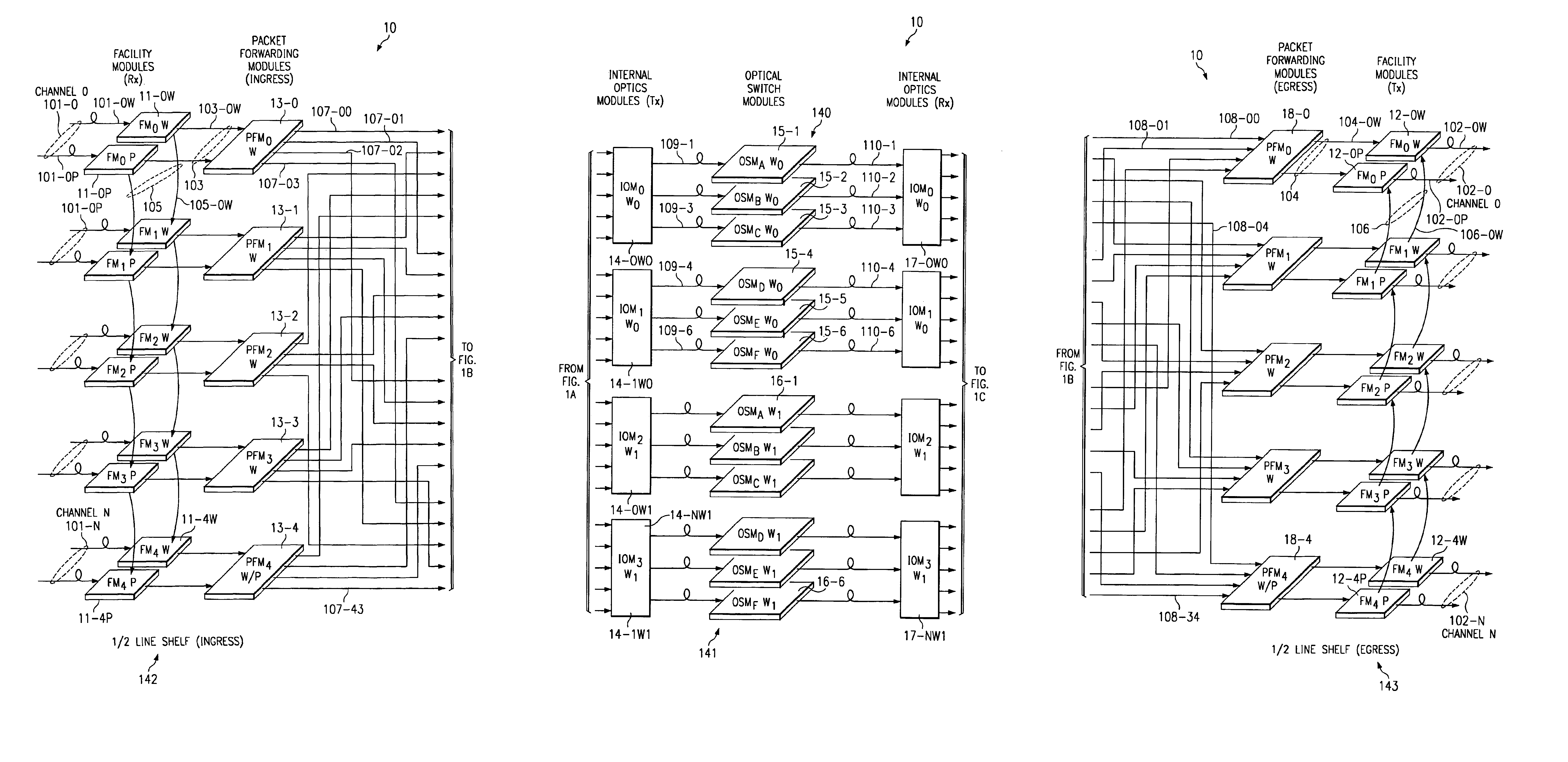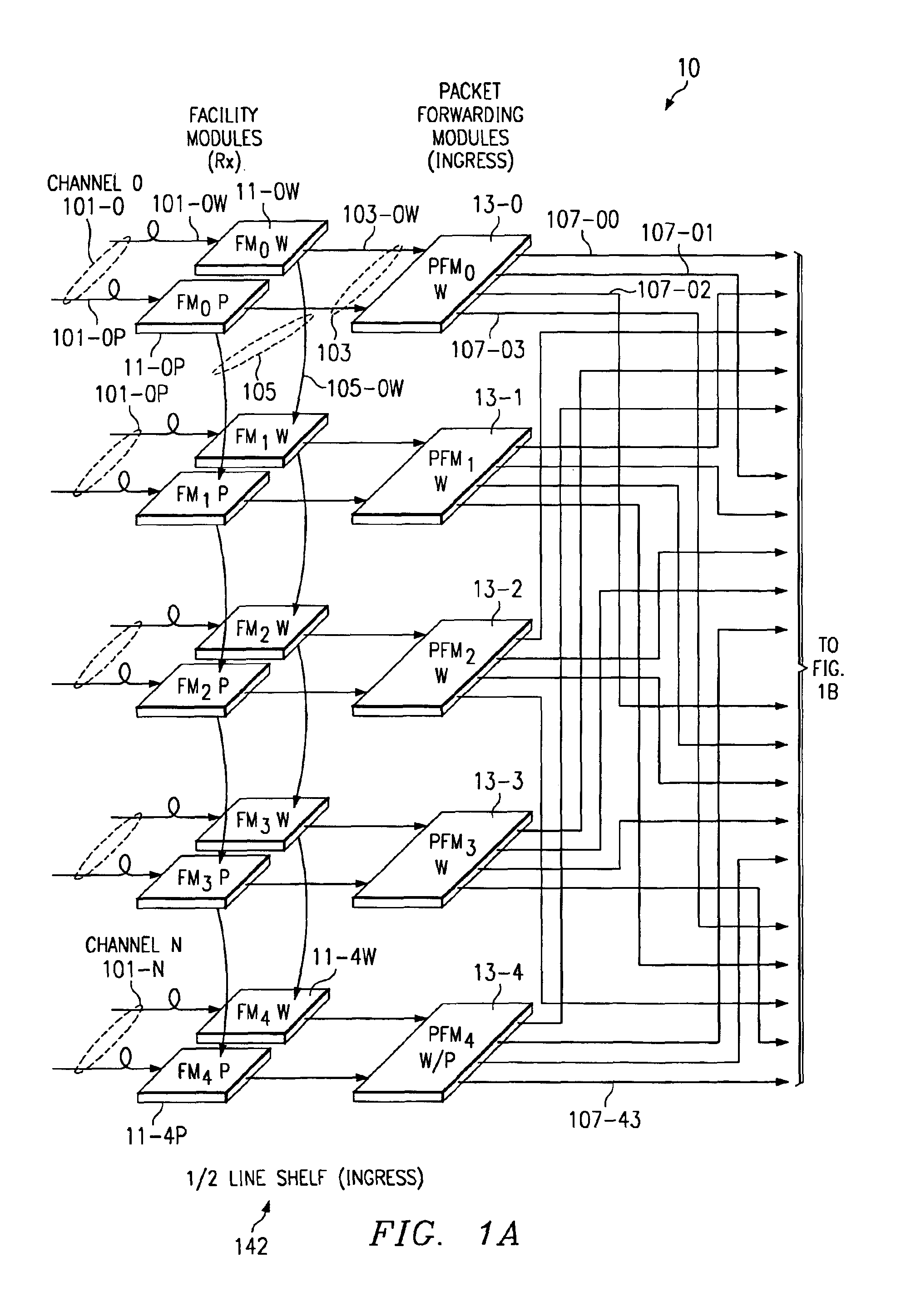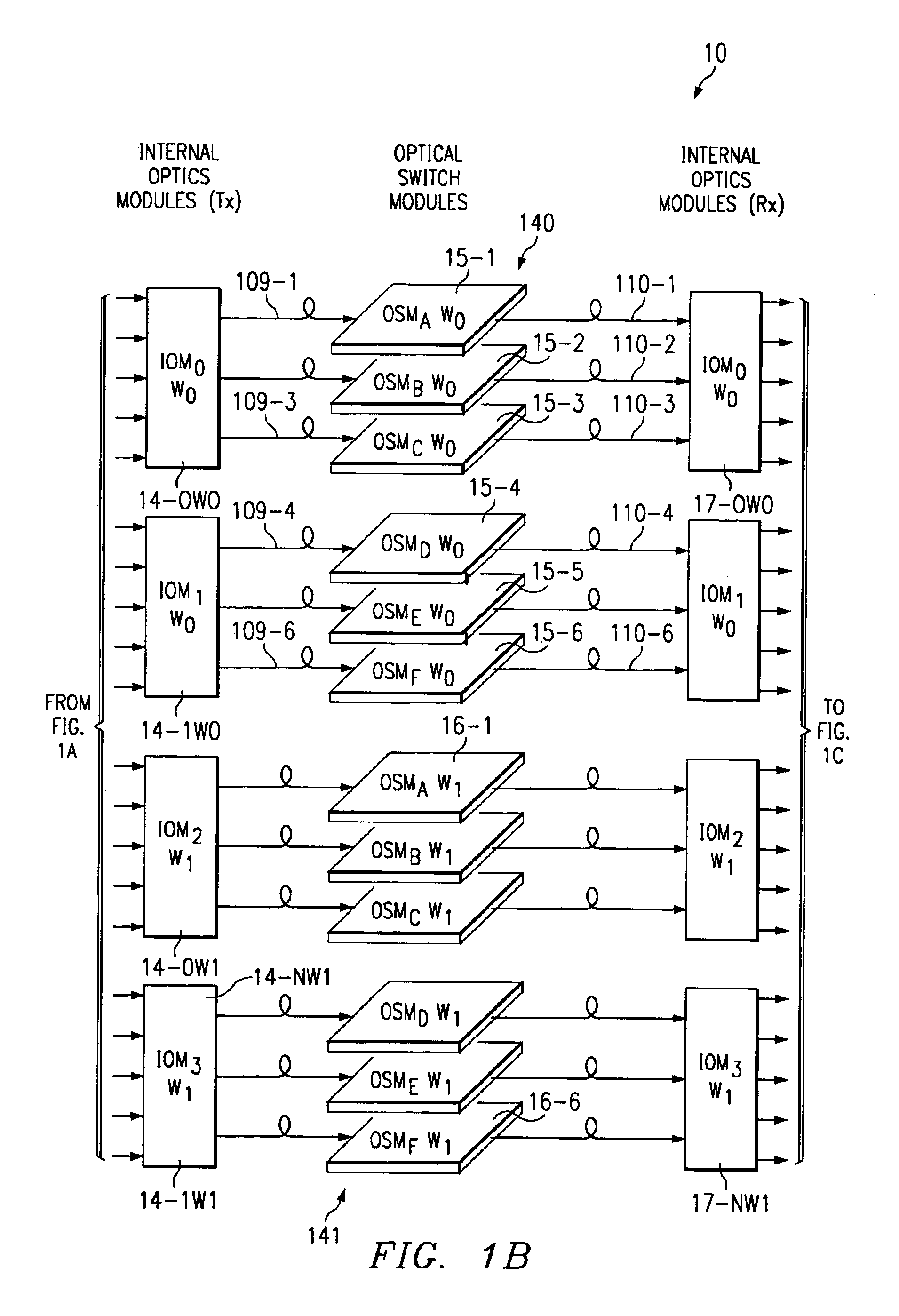Router line card protection using one-for-N redundancy
- Summary
- Abstract
- Description
- Claims
- Application Information
AI Technical Summary
Benefits of technology
Problems solved by technology
Method used
Image
Examples
Embodiment Construction
FIGS. 1A-1C form a schematic diagram showing an overview of the data paths through a router 10, in an embodiment of the present invention. For ease of understanding, FIGS. 1A-1C are partitioned into three sequentially adjacent panels. FIGS. 1A-1C do not show how router system 10 is wired, but simply illustrates the flow of data. At the upper left portion of FIG. 1A, an input 101-0 is a first SONET data channel, formatted as Packet-over-SONET in the present embodiment. Input 101-0 includes two optical fibers, namely a working input fiber 101-0W and a protect input fiber 101-0P. Fibers 101-0W, 101-0P carry duplicated information into router 10 from a peer source equipment e.g., another router or piece of SONET transmission equipment, compatible with the Packet-over-SONET format. Protect and working facility module cards 11-0P and 11-0W independently receive duplicate input from respective optic fibers 101-0P and 101-0W and perform an integrity check on the information by computing SON...
PUM
 Login to View More
Login to View More Abstract
Description
Claims
Application Information
 Login to View More
Login to View More - R&D
- Intellectual Property
- Life Sciences
- Materials
- Tech Scout
- Unparalleled Data Quality
- Higher Quality Content
- 60% Fewer Hallucinations
Browse by: Latest US Patents, China's latest patents, Technical Efficacy Thesaurus, Application Domain, Technology Topic, Popular Technical Reports.
© 2025 PatSnap. All rights reserved.Legal|Privacy policy|Modern Slavery Act Transparency Statement|Sitemap|About US| Contact US: help@patsnap.com



